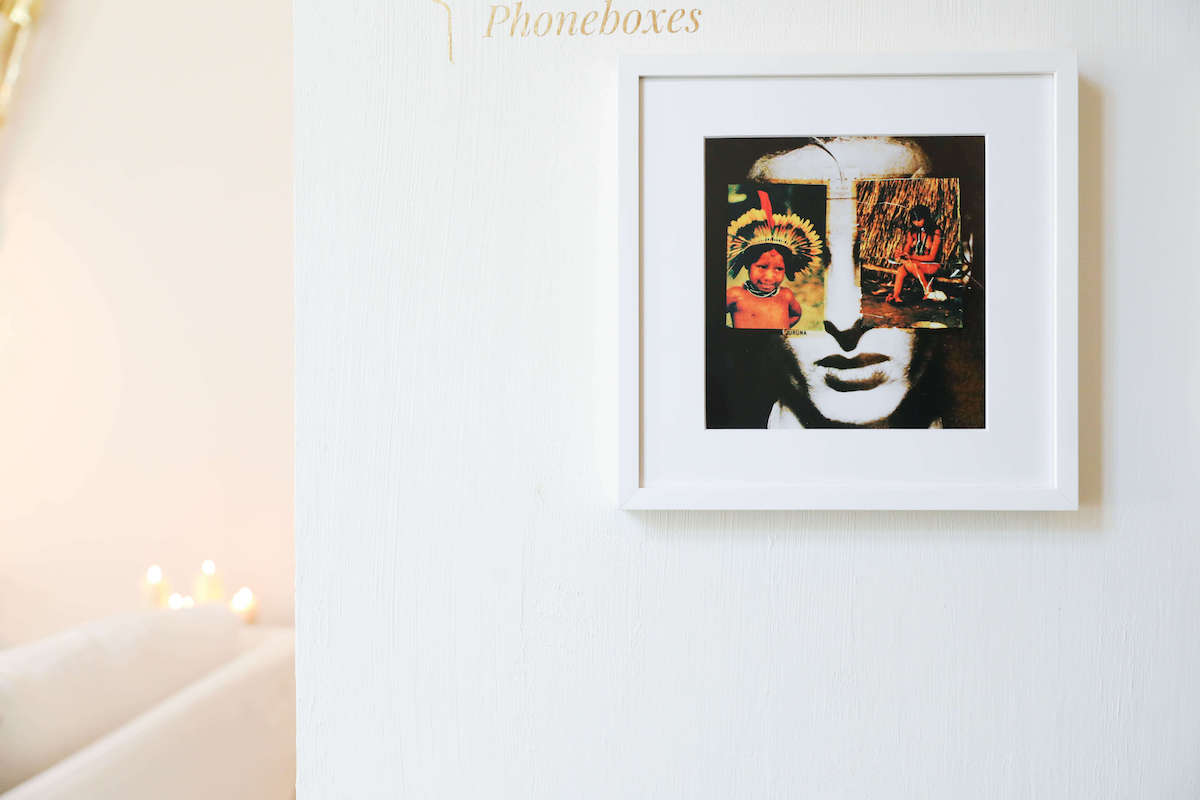
Anna Bella Geiger - 1975
História do Brasil: Little Boys & Girls
Anna Bella Geiger is widely acknowledged as one of the most important artists working in Brazil today. A pioneer of video art in the country, she was also one the great exponents of first generation Latin-American conceptual artists. Her trajectory, continuously marked by ruptures and a multiplicity of themes and methods, began in the 1950’s and early 1960’s. Chiefly linked to informal abstractionism, these early works prompted an improvised and spontaneous practice, with a rigorous concern for form.
Later in her career, she dedicated herself to metal engravings and to the use of gouache, which activated her notorious Visceral Phase, and was inspired by the movement known as Nova Figuração (New Figuration). Composed from cut metal plates, the images from this period blend discussions of engraving techniques with the organic reality of the human body to reference geopolitical representations, as though the fragmentation of our bodily parts could give rise to possible maps. At this point, the study of cartography became a definitive field of interest for the artist, problematizing notions of territory, frontiers and cultural hegemony.
By the 1970’s, Geiger’s production assumed an experimental tone, which the artist recognized as the only possible mode of art making – breaking with the orientations of the modern period and radically exploring contemporary practices. Beginning to adopt methods such as photomontage, photogravure, photocopy and video, her thematic ambitions expanded in equal measure, resulting in pieces committed to critical rhetoric and strong political connotations. During this time, the artist also focused her dialog on anthropology and the study of the image, developing her “geo-poetry” and anticipating crucial points of contention in the public debate, both globally and within Brazil.
From the early 1990’s on, Geiger further expanded her material repertoire. The distinctive series, Fronteiriços (Borderlines), where map formations and elements such as orthogonal lines and diagrams appear inside old iron archive drawers filled with wax, stands out within this period. Metaphors of knowledge and memory, the boxes, dismantled from their map cabinets, refer to the fluidity with which circuits allow for the diffusion and crystallization of certain objects and relationships, fixing them onto the surface of social imaginary. Today, Geiger continues to work with freshness, producing collages using a variety of media that revisits and explores her main themes.
Anna Bella Geiger (Rio de Janeiro, 1933) lives and works in Rio de Janeiro. Her most recent solo exhibitions include Brasil nativo/Brasil alienígena, MASP, São Paulo (2019); Maps under the sky of Rio de Janeiro, Zachęta – National Gallery of Art, Warsaw (2018); Anna Bella Geiger: Here is The Center, Wallach Art Gallery, Columbia University, New York (2018); Gavetas de Memórias, Caixa Cultural São Paulo, São Paulo (2018); Geografía Física y Humana, MUNTREF, Buenos Aires (2018), La Casa Encendida, Madrid (2017), Centro Andaluz de Arte Contemporáneo, Seville (2016).
Additionally, her work has been included in institutional group exhibitions such as Radical Women, Latin American Art, The Brooklyn Museum, New York (2018); América Latina 1960 – 2013, Fondation Cartier pour l’art contemporain, Paris (2013); Vidéo Vintage, Centre Pompidou, Paris (2012); Modern Women Single Channel 5 Artists, MoMA PS1, New York (2011); Adding it up: Acquisitons 70-95, MoMA, New York (1995); 39th Venice Biennale, Venice (1980); PROSPECTIVA 74, Museu de Arte Contemporânea de São Paulo, São Paulo (1974); São Paulo Biennials, São Paulo (1961 – 1967).




